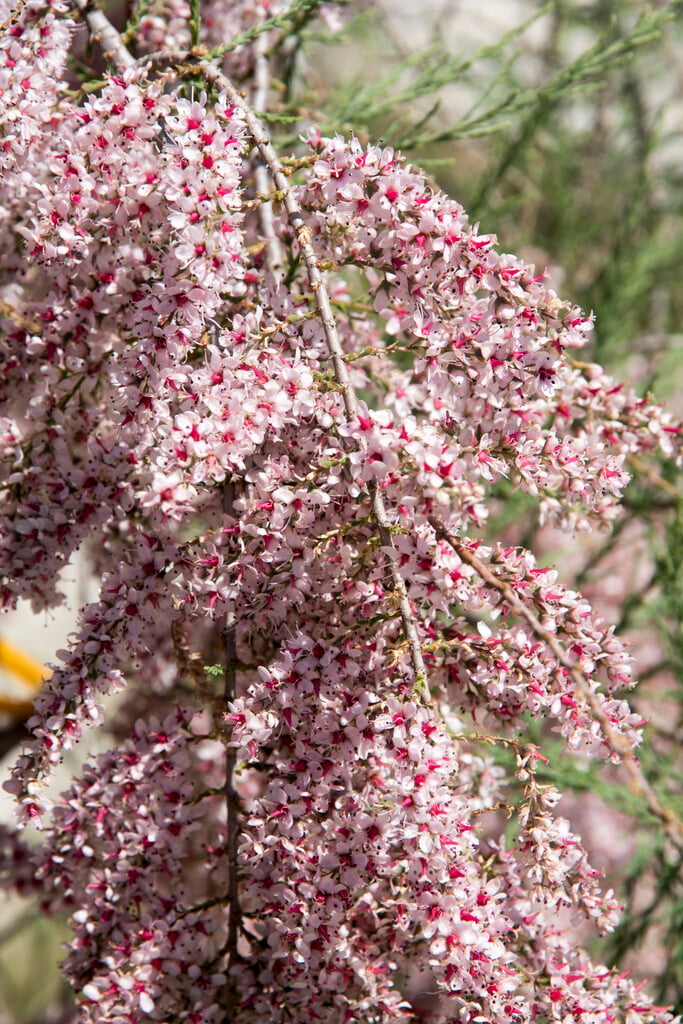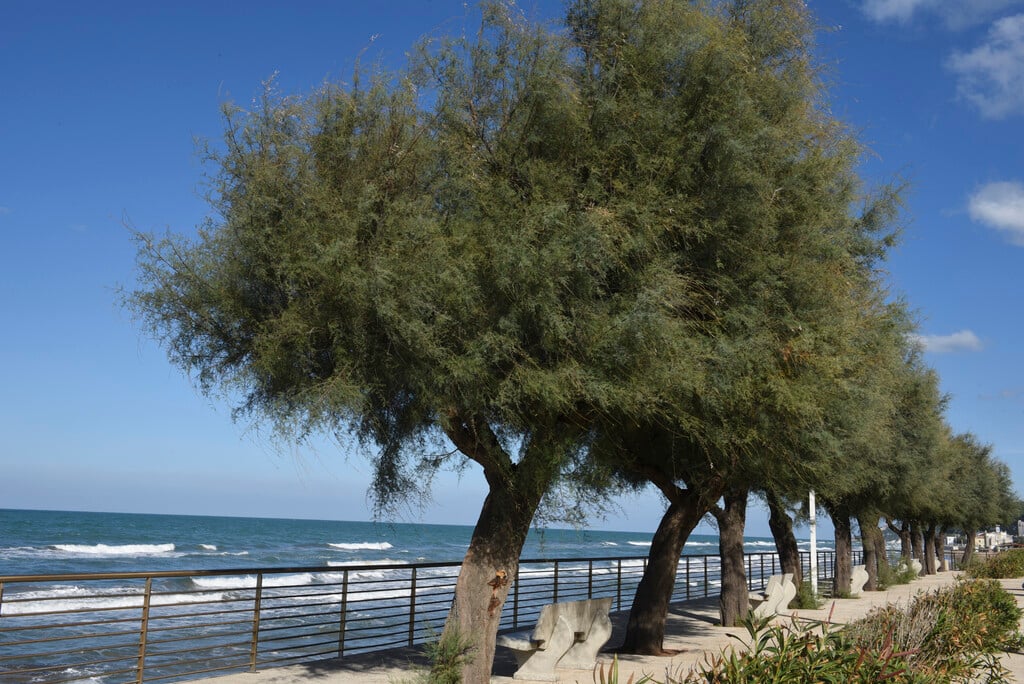Tamarix gallica
common tamarisk
A large, spreading, deciduous shrub or small tree to around 4m tall with dark purple-brown young shoots clothed with small, scale-like, blue-green leaves. Star-shaped, whitish-pink flowers are borne in cylindrical clusters on the current season's shoots
Synonyms
Tamarix anglicaSize
Ultimate height
2.5–4 metresTime to ultimate height
10–20 yearsUltimate spread
4–8 metresGrowing conditions
Moisture
Moist but well–drained, Well–drainedpH
Acid, Alkaline, NeutralColour & scent
| Stem | Flower | Foliage | Fruit | |
| Spring | Green Blue | |||
|---|---|---|---|---|
| Summer | Pink White | Green Blue | ||
| Autumn | Green Blue | |||
| Winter |
Position
- Full sun
Aspect
South–facing or West–facing or East–facing or North–facing
Exposure
Exposed or Sheltered Hardiness
H5Botanical details
- Family
- Tamaricaceae
- Native to GB / Ireland
- No
- Foliage
- Deciduous
- Habit
- Spreading branched
- Genus
Tamarix are deciduous shrubs or small trees of feathery effect, with minute leaves and racemes of very small pink or white flowers in spring, summer or early autumn
- Name status
Correct
- Plant range
- SW Europe
How to grow
Cultivation
Grows well in most soils but dislikes shallow chalky soil. Requires full sun and a well-drained sandy soil in coastal plantings but it requires shelter from cold drying winds when planted inland
Propagation
Propagate by semi-hardwood cuttings in summer or hardwood cuttings in winter. Propagate by seed sown, when ripe, in containers in a cold-frame
Suggested planting locations and garden types
- Coastal
- Cottage and informal garden
- Low Maintenance
Pruning
Pests
Generally pest-free
Diseases
May be susceptible to honey fungus (rarely)
Love gardening
Sign up to receive regular gardening tips, inspiration, offers and more
View our Privacy Policy
Get involved
The Royal Horticultural Society is the UK’s leading gardening charity. We aim to enrich everyone’s life through plants, and make the UK a greener and more beautiful place.

